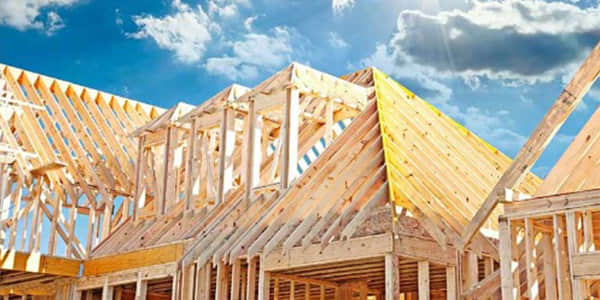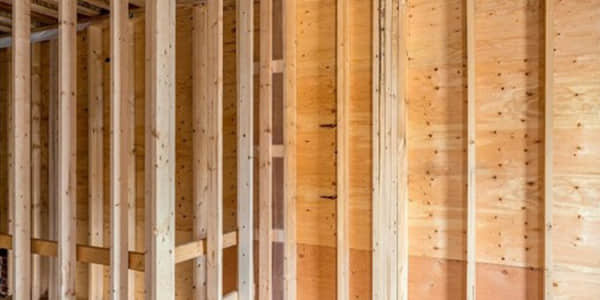Different Types Of Plywood In Construction
Nov 09, 2023Plywood stands as an exceptionally adaptable construction material, essential in numerous building and woodworking endeavors. Its widespread appeal stems from the diverse array of plywood types, each meticulously designed to cater to distinct needs and purposes. In this article, we will delve into the various plywood variations, their inherent characteristics, and their optimum applications.

Definition and Common Uses:
Softwood plywood is produced using timber sourced from softwood tree species like pine, fir, and cedar. It is widely used in construction and structural applications due to its strength and cost-effectiveness. Common uses include sheathing, subflooring, and roof decking.
Properties and Advantages:
This type of plywood is renowned for its dimensional stability, resistance to warping and shrinking, and robust structural integrity, making it an excellent choice for load-bearing purposes. Additionally, softwood plywood is widely accessible and often presents a more budget-conscious alternative when compared to hardwood plywood.

Characteristics and Popular Applications:
Hardwood plywood is made from hardwood veneers, including oak, birch, or maple. It is celebrated for its attractive appearance and is frequently used in high-end cabinetry, fine furniture, decorative wall paneling, and custom millwork. The hardwood veneer provides a beautiful and durable surface for woodworking projects.
Advantages of Using Hardwood Plywood:
Hardwood plywood stands out for its remarkable stability, aesthetic allure, and exceptional durability, making it highly resistant to wear and tear.Its versatility and rich grain patterns make it a preferred choice for projects where appearance and durability are paramount.

Features and Outdoor Applications:
Exterior plywood is created to withstand exposure to the elements. It is constructed with a weather-resistant adhesive, making it suitable for outdoor construction projects, such as roofing, siding, and outdoor furniture.
Why Exterior Plywood is Weather-Resistant:
The key to exterior plywood's resilience lies in its adhesive, which is designed to withstand moisture and harsh weather conditions. It provides a reliable and long-lasting solution for projects exposed to rain, snow, and sunlight.

Interior Applications and Versatility:
Interior plywood is designed for indoor use and is ideal for applications like cabinetry, furniture, shelving, and decorative wall paneling. It is versatile and cost-effective, making it a popular choice for interior projects.
Why Interior Plywood is a Cost-Effective Choice:
Interior plywood is more budget-friendly compared to hardwood plywood, making it an accessible option for DIY enthusiasts and interior designers. Its versatility allows for a wide range of creative possibilities.

Understanding the Strength and Load-Bearing Capabilities:
Structural plywood is engineered to meet strict load-bearing requirements in construction and engineering projects. It is designed to provide superior strength and stability in applications where structural integrity is essential.
Applications in Construction and Engineering:
Structural plywood is commonly used in building construction, including roof and floor sheathing, as well as for bracing walls and roofs. Its strength and reliability contribute to the overall stability of structures.

Fire-Resistant Properties and Uses:
Fire-rated plywood is treated with fire-resistant chemicals to slow down the spread of fire. It is used in applications where fire safety is a significant concern, such as commercial buildings, fire-rated doors, and areas that require fire resistance.
Enhancing Fire Safety with Fire-Rated Plywood:
Fire-rated plywood contributes to building safety by offering protection against the rapid spread of flames in case of a fire. It is often required in fire-prone areas or in structures where fire protection is a regulatory requirement.
Moisture resistance: Employ marine or exterior plywood for outdoor or areas of high moisture.
Strength requirements: Structural plywood should be used where load applications are expected.
Aesthetic appeal: For surfaces to be visible, hardwood plywood provides that polished look.
Plywood, with its multitude of types, offers a solution for nearly any building or woodworking project. Understanding the specific characteristics and ideal uses of different plywood types allows for informed decision-making when selecting the right material for your project. Whether you need strength, durability, water resistance, or a smooth finish, there's a plywood type designed to meet your requirements.
What Are The Five Grades Of Plywood?
What Is The Lowest Quality Plywood?
What Is The Most Expensive Type Of Plywood?
Plywood -- WIKIPEDIA
How Was It Made? Building A Plywood House -- YOUTUBE
What Size Does Plywood Come In? -- CLP-INC